Rwanda is home to eleven different barbets. They are all residents, present throughout the year. That being said, some are a more common sight than others… For example, I often see the Spot-flanked Barbet in Rwanda’s capital, Kigali, and across much of the country, whereas the Yellow-billed Barbet can only be found in Nyungwe National Park at elevations under 1,800m. Records show the White-headed Barbet arrived in Rwanda just over a decade ago and initially sightings were rare. It has now become a more common sight on the savannas of Akagera National Park. Ten of the eleven species prefer to stay off the ground and in the tree canopy, the Crested Barbet is the exception and can be found foraging on the ground in Akagera National Park. As an adaptation to spending time on the ground, the Crested Barbet has ‘proportionally longer legs and a longer tail’ (Carnaby 2018, p. 534).
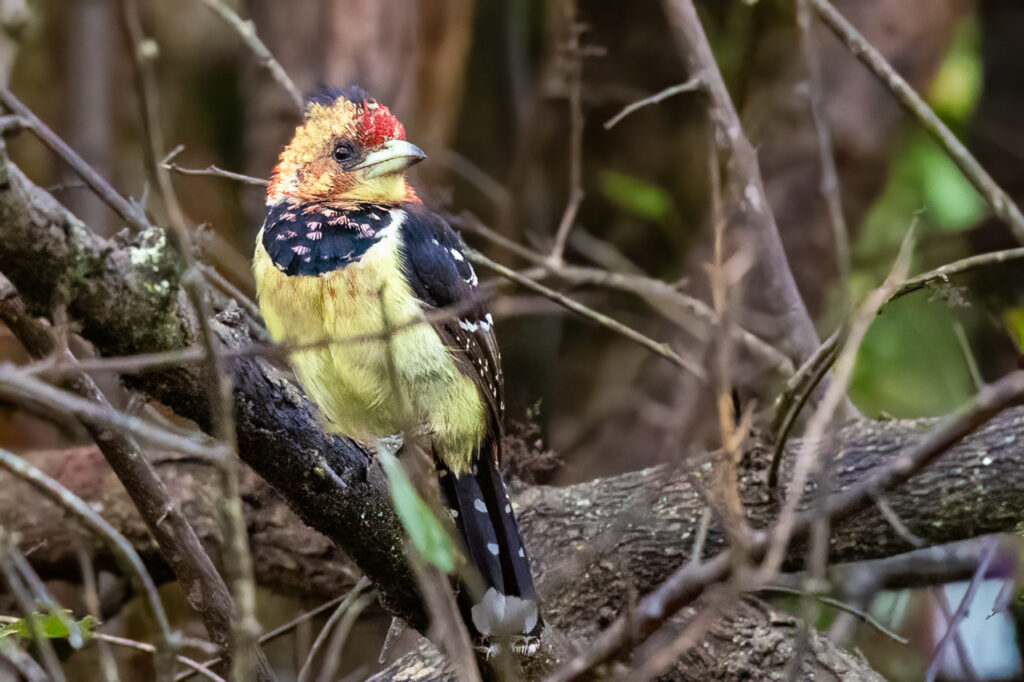
Not only are their preferred habitats diverse, the barbets are physically distinct as well! The plumage of the eleven species is a riot of colours and patterns. The smallest species in Rwanda – Yellow-rumped Tinkerbird – is just 10 cm in length, whilst the largest species, the Double-toothed Barbet, is more than double that at 23 cm. The small beaks of the tinkerbirds (see image of a Yellow-fronted Tinkerbird below) can be described as almost dainty, whereas the upper mandible of the larger barbets’ beaks are hooked, notched, and / or toothed. The majority of barbets have rictal bristles, which are hair-like feathers around edge of their beaks. It is thought these rictal bristles help protect the eyes from flying debris, which would make sense given barbets excavate nest cavities in old and dead trees with their beaks. Barbets feed on a great variety of fruit as well as insects and invertebrates. Some species forage on branches and the trunks of trees, and quite a few catch insects from the air.
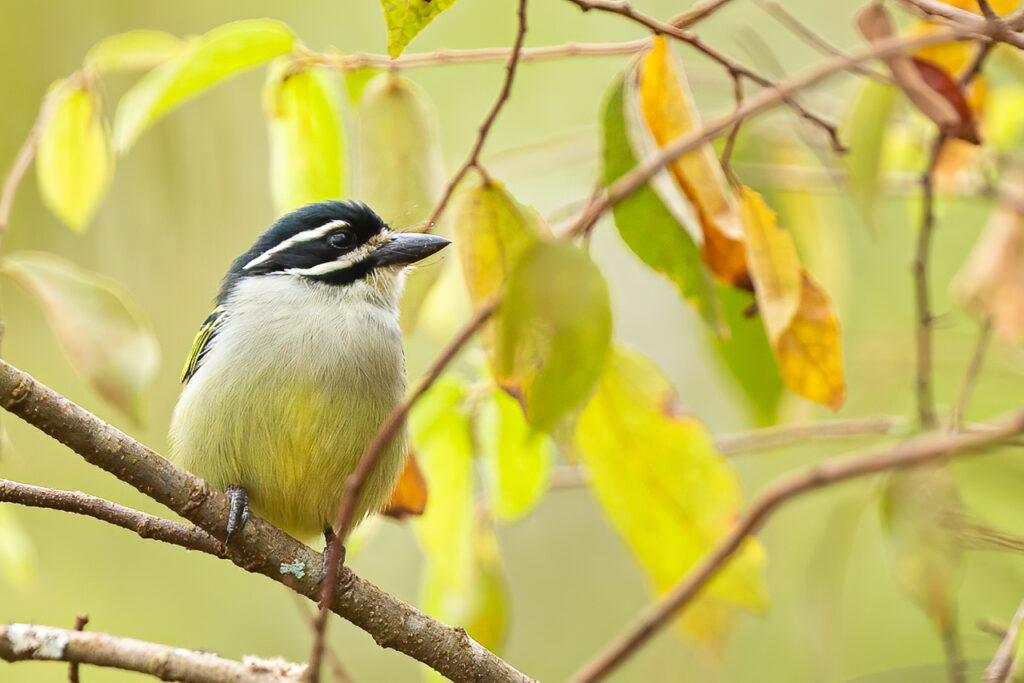
Barbets are socially monogamous and are often cooperative breeders. This means that the previous breeding seasons’ young will help the parents raise the next generation by collecting food and defending the territory. Breeding seasons are dictated more by the access and availability of food than by time of year. Courtship includes the male offering gifts of food to the female (see image of the Double-toothed Barbet pair below) and the pair calling to each other and duetting to strengthen their bond.
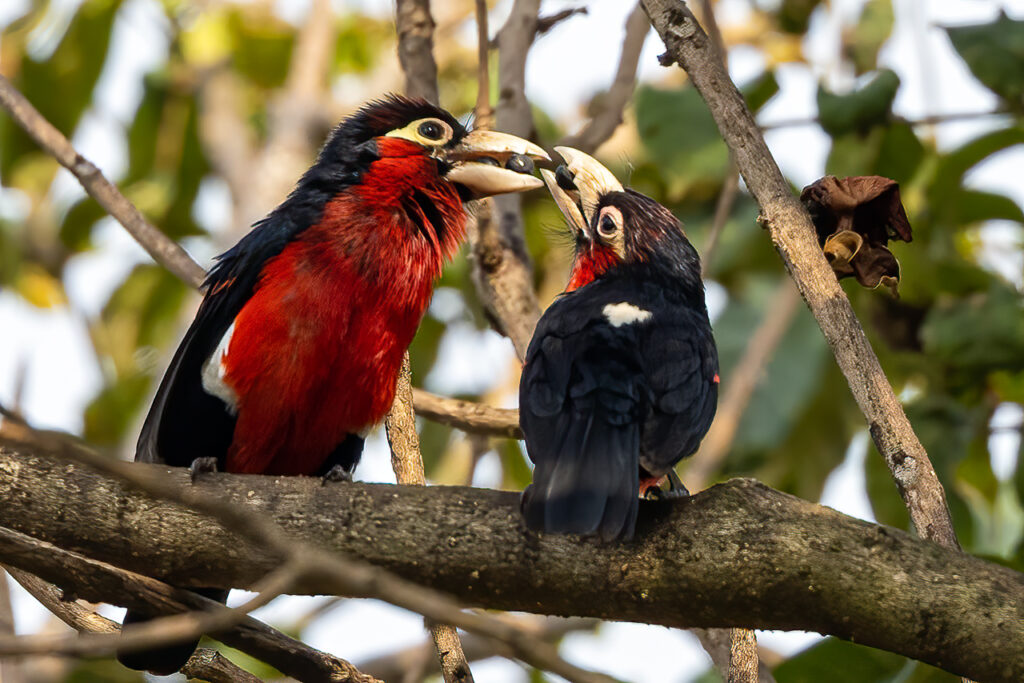
The eleven species all excavate nest cavities in dead or old trees with their beaks, but the Crested Barbet will occasionally excavate nest holes in termite mounds or earth banks instead. This reliance on old and dead trees for nesting highlights why barbets are particularly susceptible to habitat destruction and the loss of old trees from a landscape. Debris and wood chips produced during the excavation are initially dropped below the nest. The wood chips are subsequently retrieved and used to line the inside of the nest. Any remaining debris is removed from below the nest so that it doesn’t lead potential predators to the nest. Barbets will often return and reuse their nest cavities each breeding season, and so have to evict any other creature that may have taken up residence in the nest during their absence. Once the eggs have been laid one of the adults will remain in the nest at all times to guard against any wanted intruders. Given half the chance, lizards, snakes and birds of prey will predate nest sites. Lesser Honeyguides are brood parasites that try and use barbets as hosts to raise their young.
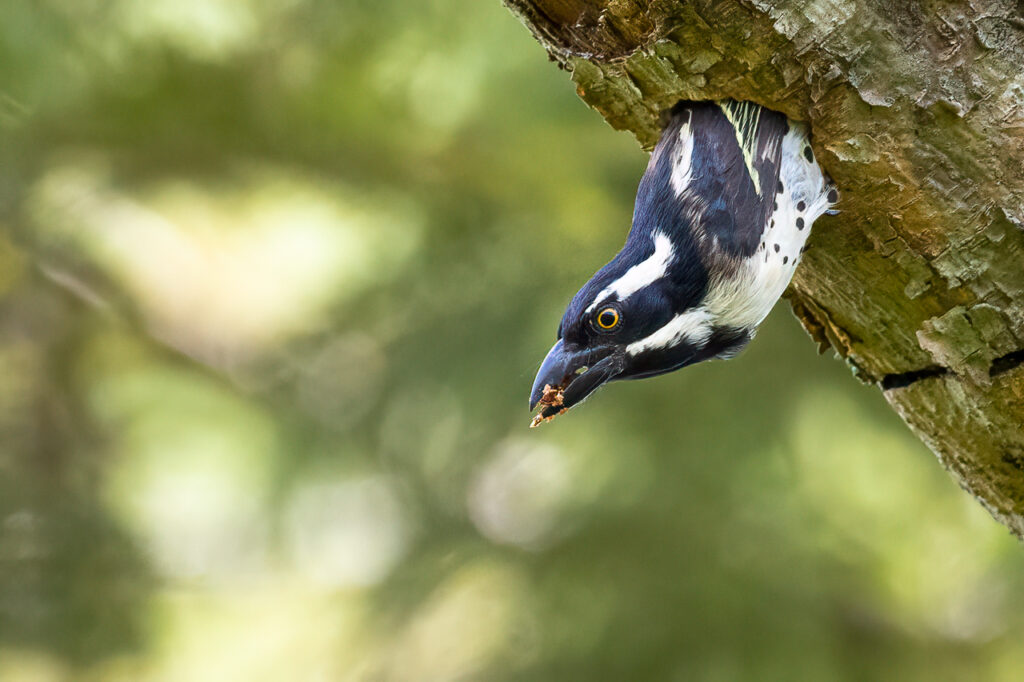
Rwanda’s barbets are fascinating to watch and can be found in a variety of habitats across the country. So whether you’re on a game drive in Akagera, trekking in either Nyungwe or Volcanoes National park, or even in a garden or café in Kigali – keep an eye out for one of the eleven different barbets that call Rwanda home!
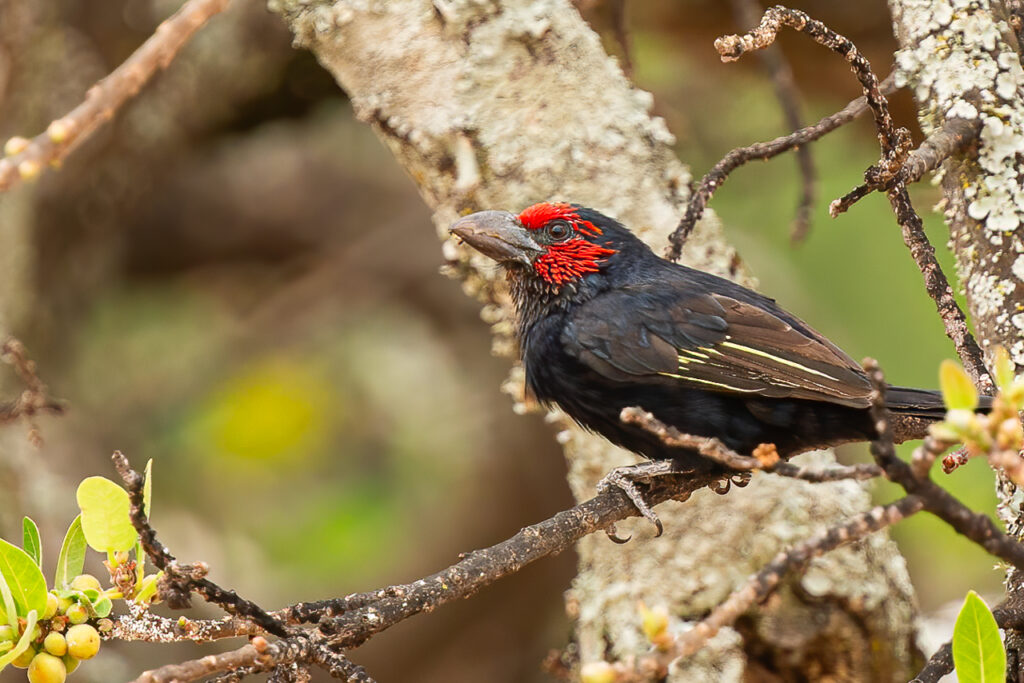
Carnaby, T. (2018) Beat Around the Bush: Birds (3rd edn), Jacana Media, Johannesburg, South Africa.

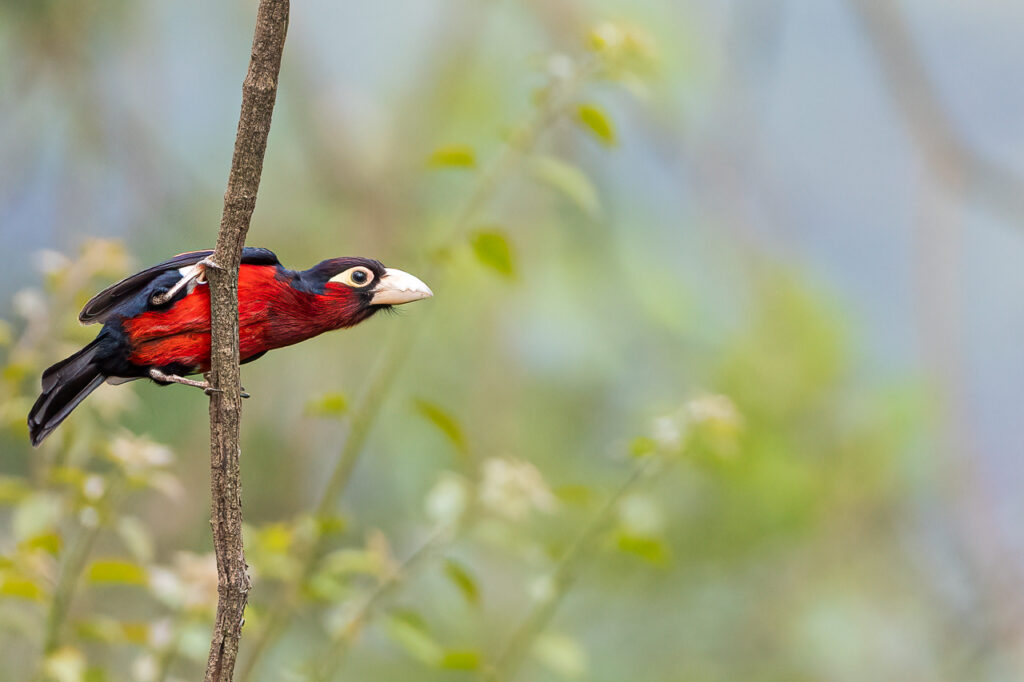
Lovely photos.
Thank you!
Thanks for letting us know all behavior of Barbet, Well researched and photographed. Hope next one is about Sunbird ,Fiscal and Egret , and others
Thank for your feedback and your comments Sylvere, if you have a look at the other articles you’ll see there is a Sunbird article… Herons and Egrets will be the next ones.
Amazing work! It’s so interesting! We learn a lot about Barbets. Stunning pics too.
It’s gem, Will! I mean it❤️❤️
Many thanks for your kind words Nikky, they make me happy and feel like like what I am doing is worthwhile!